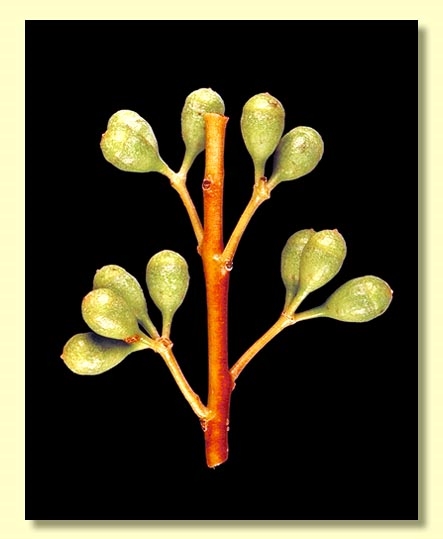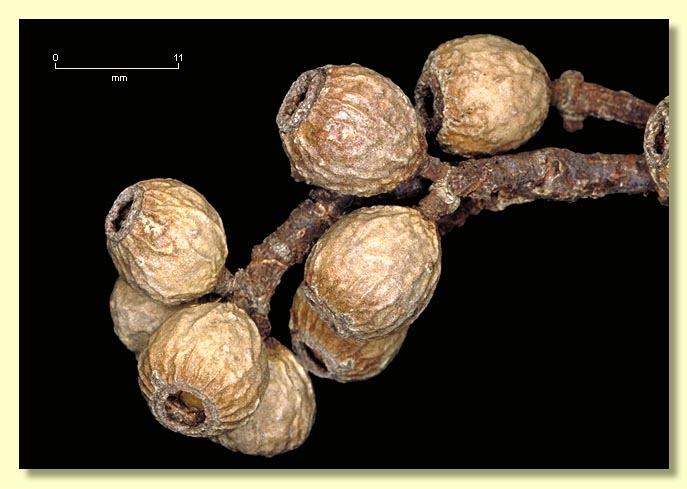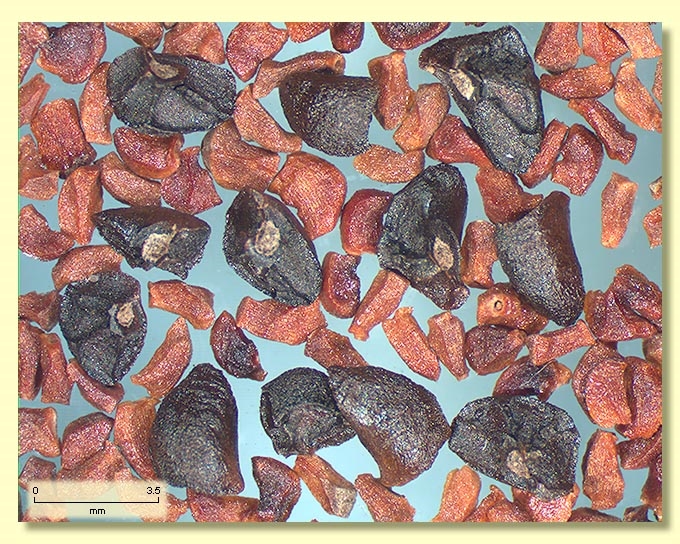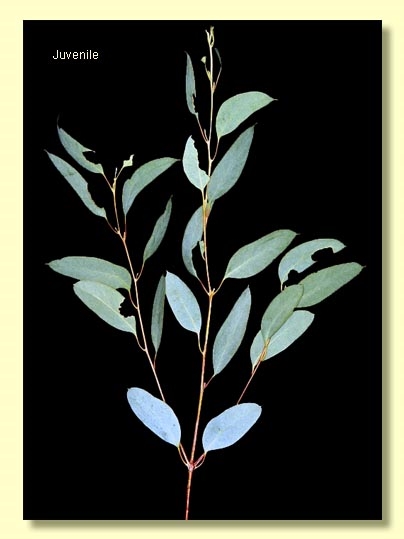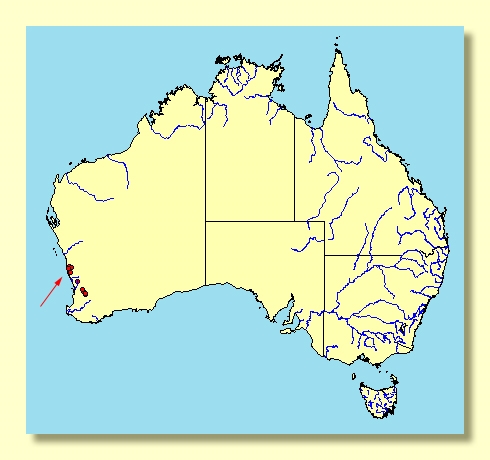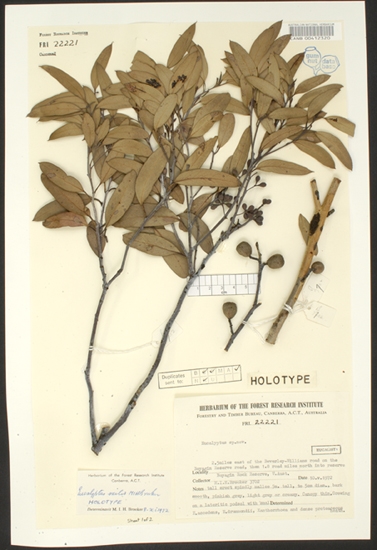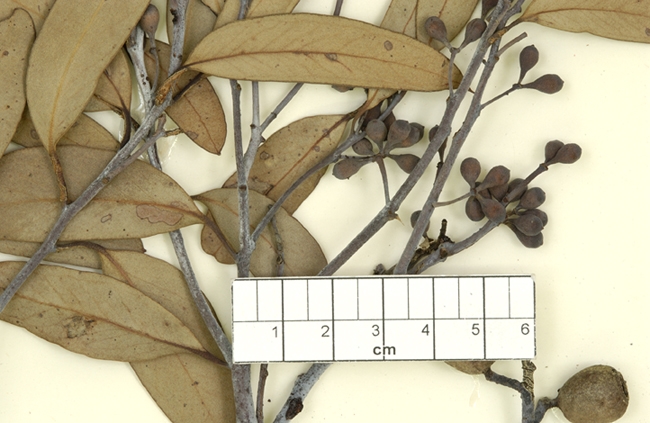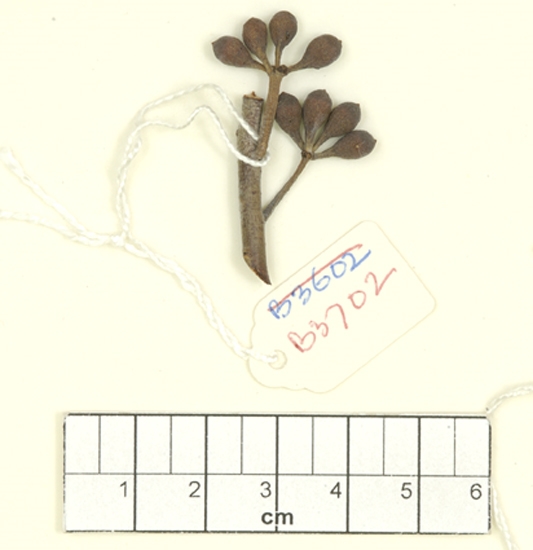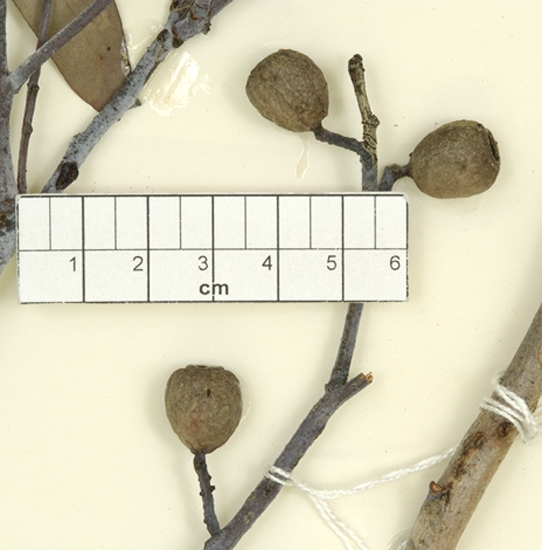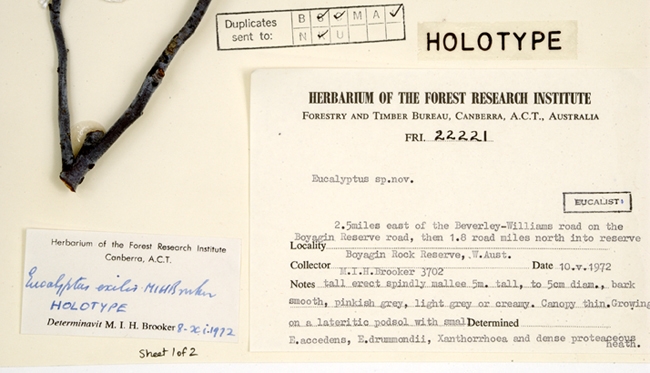Euclid - Online edition
Eucalyptus exilis
Eucalyptus | Eucalyptus | Longistylus | Frutices | Muricatae
Bark smooth throughout, whitish to pale grey over yellow to coppery, shedding in ribbons.
Branchlets lacking oil glands in the pith.
Juvenile growth (coppice or field seedlings to 50 cm): stems usually square in cross-section; juvenile leaves sessile, opposite for a few nodes then becoming petiolate, sub-opposite, elliptic to ovate, 5–7.5 cm long, 4–5 cm wide, green.
Adult leaves alternate, petioles 0.7–1.5 cm long; blade lanceolate or sometimes tending to elliptical, 3.5–6.5 cm long, 0.8–1.5 cm wide, base tapering to petiole, margin entire, apex pointed, concolorous, slightly glossy, green, side-veins acute, reticulation dense, intramarginal vein remote from margin, oil glands obscure or sparse and intersectional.
Inflorescence axillary unbranched, peduncles 0.8–1.5 cm long, buds 11 per umbel, pedicels 0.3–0.7 cm long. Mature buds obovoid to pyriform, 0.6–0.8 cm long, 0.4–0.5 cm wide, glaucous, scar absent, the single operculum rounded and often apiculate, stamens inflexed, anthers reniform to cordate, versatile, dorsifixed, dehiscing by curved oblique slits that are not confluent apically, style long and usually straight, rarely bent in upper third, stigma tapered to blunt, locules 3(4), the placentae each with 2 vertical rows of ovules. Flowers white.
Fruit pedicellate or sessile (pedicels 0–0.7 cm long), barrel-shaped to truncate-globose, 0.8–1.5 cm long, 0.9–1.3(1.6) cm wide, disc descending vertically, valves 3(4), enclosed.
Seeds blackish to brown, 3–5 mm long, obliquely pyramidal, dorsal surface minutely roughened, ventrally ridged, hilum terminal.
Cultivated seedlings (measured at ca node 10): cotyledons reniform; stems rounded to square in cross-section, smooth or slightly warty; leaves sessile for 4 to 6 nodes then shortly petiolate, alternate by node 5–11, elliptic to ovate, 5–10 cm long, 2.5–5.5 cm wide, dull, mid-green, discolorous at first but concolorous by node 5–10.
Flowering has been recorded in July, September, October and December.
A mallee endemic to Western Australia with a disjunct distribution at three localities south-east and north of Perth, viz. Boyagin Rock, near Bindoon and north-east of Mt Lesueur. The bark is smooth and the adult leaves slightly glossy green.
Eucalyptus exilis belongs in Eucalyptus subgenus Eucalyptus series Muricatae, a group characterised by smooth bark, buds with a single operculum (hence no operculum scar), reniform anthers that shed pollen by two oblique slits that are not confluent apically, ovules arranged in two rows on the placenta, pyramidal seeds, non-ribbed fruit and seedling leaves opposite for up to ca ten nodes.
E. exilis is closely related to two other species, viz. E. sepulcralis of the Fitzerald River National Park, which is taller and has a finally pendulous, open, thin-leaved crown, and larger buds and fruit; and E. pendens from near Badgingarra, which has the habit of E. sepulcralis and larger fruits than E. exilis. E. exilis has a more typically mallee habit and further differs from both these species in being denser-crowned and not pendulous or wispy.




